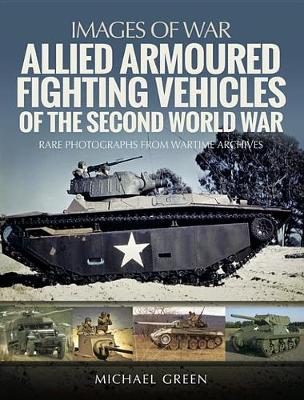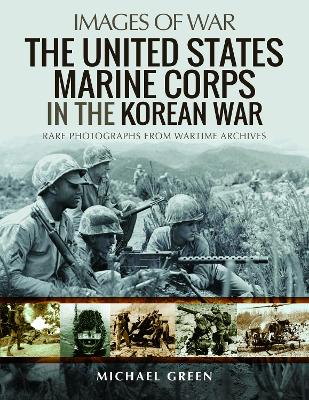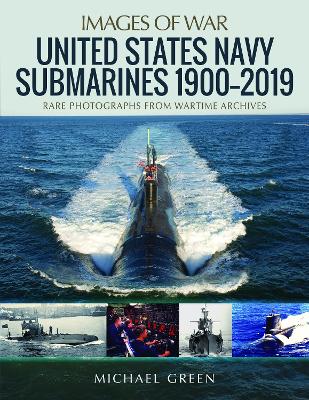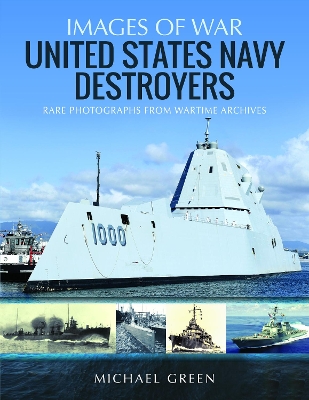Images of War
17 total works
Compiled and written by Michael Green, Aircraft Carriers of the United States Navy contains superb images of all the different types of classes of carriers employed by the US Navy since 1922. These and its highly informative text and captions give the reader a broad overview of this fascinating subject.
All these and more are described in expert detail and illustrated in this fine book. Future projects are also covered.
The Cold War demanded ever more powerful aircraft, such as the B-58 Hustler and B-52 Stratofortress and fighters including the F-86 Sabre, F-104 Starfighter and F-4 Phantom.
In November 1950, the Chinese Army invaded North Korea with eight divisions tasked with the destruction of the 1st Marine Division at the Chosin Reservoir. The Marines made a 78-mile fighting withdrawal in arctic conditions before being evacuated by the US Navy.
In February 1951, the 1st Marine Division returned to combat assisting Eighth (US) Army to repulse five Chinese Army offensives over four months. By November 1951, the large-scale back and forth offensives operations by the opposing sides had ended, replaced by a stalemate which lasted until the 27 July, 1953 armistice. The bitter three-year conflict accounted for the death of 4,267 Marines with another 23,744 wounded.
In classic Images of War style, expert author Michael Green describes the Marine Corps' outstanding contribution, organization, tactics, fighting doctrine and weaponry.
The last US battleship retired in 1992 having served in the Korean and Vietnam War, the Middle East and finally Desert Storm. This fine book gives the expert and layman a privileged overview of one of the greatest weapon systems in military history.
At its height in 1968, the USMC had 86,000 men in South Vietnam. Almost 500,000 Marines would eventually rotate in out of South Vietnam during their typical one-year tours of duty. In the end, the fighting during such well-known battles at Con Tien, Chu Lai, Hue, Khe Sanh and Dong Ha and thousands of now forgotten smaller-scale engagements would cost the USMC 13,070 killed in action and 88,630 wounded, more casualties than they suffered during the Second World War.
In this book, well-known military historian Michael Green using hundreds of dramatic images tells the dramatic and gallant story of the Marines' contribution to an unwinnable war; the battles, their equipment, from rifles to helicopters and jets, and the strategy adopted by the Corps.
Contrast this to the 18 Ohio Class nuclear-powered submarines which entered service in 1981. Weighing 21,000 tons with a crew of 155, its underwater speed is estimated at 30mph at a depth of some 1,000 feet. It carries 16 nuclear warhead ballistic missiles with a range of 4,600 miles.
This latest Images of War title provides a detailed insight into the many US Navy submarine classes. Particularly fascinating is the post Second World War programme of nuclear powered submarines stating with the Nautilius and progressing to the Skate, Thresher, Sturgeon, Los Angeles and George Washington. Admiral Hyman G Rickover's role as Father of the nuclear navy is examined in detail.
This superbly illustrated yet affordable book is a must for all naval enthusiasts.
Between 1932 and Pearl Harbor ten new classes totalling 169 destroyers came into service. During the war years American shipyards turned out a further 334 vessels. Of the three classes, the 175 Fletcher-class were judged the most successful.
The Cold War years saw the development of seven more classes. More recently 82 of the stealth shaped Arleigh Burke class have been ordered but the futuristic Zumwalt-class programme has been curtailed for cost reasons.
Expert author Michael Green is to be commended for compiling this comprehensive account of the USN's impressive destroyer programme with its authoritative text and superb images.







